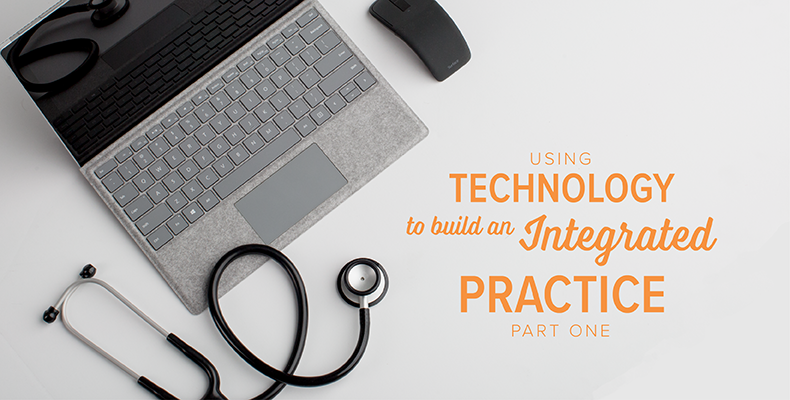See how the fully-automated private practice can improve patient engagement & workflow.
Note: This is the first blog in a 6-part series
According to a survey conducted by The Physicians Foundation1 to more than 17,000 physicians nationwide, physicians spend 21% of their time engaged in non-clinical paperwork. Given a workforce of approximately 800,000 physicians in active patient care, this equates to 168,000 physician FTEs not engaged in clinical activities.
Additionally, due to rising regulatory burdens and the growing demand for their services, 80% of the responding physicians indicate they are overextended or at capacity, with no time to see additional patients. You may ask, what are the other 20% doing correctly? Only 14% of the 80% say they have the time needed to provide the highest standards of care. Given that a majority of physicians are at or over capacity, it’s not surprising that 72% feel that external factors such as third-party authorizations and higher deductibles significantly detract from providing quality of care. These factors have a profound impact on how care is delivered and received.
But how can the independent practice compete with the resources of hospitals and large health systems? A technology-enabled, integrated practice is key to solve the physician burnout and patient engagement dilemmas.
The Importance of Implementing Technology
Today the most successful and profitable independent practices rest on a foundation of office technology that allows them to work more efficiently, maintain a better work/life balance, grow their practice, reduce errors and provide an excellent patient experience.
From patient care to management of your medical practice, innovation in technology continues to prove its worth in all aspects of healthcare. As stated in Forbes,2 technology will continue to shape and change the business of healthcare both in day-to-day duties and overall patient care. Technology has worked to improve the medical field, but without a complete understanding of the integration of these technologies into a healthcare system, the value of these innovations is diminished. It’s crucial to stay up-to-date on available tools to most effectively advance your independent practice. The responsibility of implementing new technologies into your practice often falls on the office manager. Available technologies can be expensive, and the money and effort spent on acquiring these tools can go to waste if your office manager, and healthcare provider(s) alike, lacks adequate comprehension of their application or value.
It’s also important to understand that technology is a tool that should be used to enhance the patient experience and allow you to become a better physician; to enable you to be more efficient and in touch with your patients. In an article by Dr. Howard Lurks, he encourages doctors to use technology to build trust with your patients.3 Dr. Lurks explains, “Let’s change the focus from “technology” to the useful and meaningful processes that technology enables: knowledge, sharing, communication and trust. Technology is only an enabler, much like the social graph. They are tools, they are platforms, and if properly utilized, they may enable “disruption” or transformation. It is the few individuals, and I do mean a few, who know how to utilize these tools and platforms. They are pushing the envelope, producing meaningful, robust change — and gaining the trust of their “followers” along the way.”
The types of technologies that prove to significantly improve independent practices are becoming more readily accessible and affordable. Many have found that each of these areas have an important role to play in every element of practice success.
Let’s take a look at the first building block of integrated technologies that go into the fully-automated independent practice that will help you better manage your time and improve patient engagement and practice outcomes:
#1 Interoperability
Better information leads to better health outcomes. Interoperability is the power of two or more systems to exchange information electronically. For example, if your EHR does not communicate with your Practice Management software, it causes redundancy in work and creates a higher risk for error. A traditional paper-based practice will spend hours of wasted time copying, pasting and manually entering, and reentering, patient information. According to HIMSS, “In healthcare, interoperability is the ability of different information technology systems and software applications to communicate, exchange data and use the information that has been exchanged.”3
When considering implementing an EHR within your private practice, or upgrading to a more efficient EHR, you should think about its interoperable capabilities; not only within your practice, but also outside your practice, and reliably secured and accessible in the future. The American Academy of Family Physicians says “Data exchange schema and standards should permit data to be shared across clinicians, lab, hospital, pharmacy and patient regardless of the application or application vendor.”4
Interoperability is here to stay, especially as healthcare technology becomes more and more integrated. If your systems lack interoperability, you are behind the times.
- The Physicians Foundation. 2016 Survey of America’s Physicians Practice Patterns & Perspective, September 21, 2016.
- Lee, Ellen. 5 Ways Technology is Transforming Health Care. https://www.forbes.com/sites/bmoharrisbank/2013/01/24/5-ways-technology-is-transforming-health-care/#4a722f3026c5Forbes, January 24, 2013.
- HIMSS Dictionary of Healthcare Information Technology Terms, Acronyms and Organizations, 2nd Edition, 2010, Appendix B, p190, original source: Wikipedia.
- American Academy of Family Physicians (AAFP), Center for Health IT, 2013.


